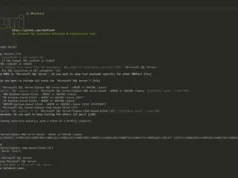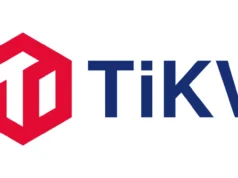Sleeper is a serverless, cloud-native, log-structured merge tree based, scalable key-value store. It is designed to allow the ingest of very large volumes of data at low cost.
Data is stored in rows in tables. Each row has a key field, and an optional sort field, and some value fields.
Queries for rows where the key takes a given value takes around 1-2 seconds, but many thousands can be run in parallel. Each individual query has a negligible cost.
Sleeper can be thought of as a cloud-native reimagining of systems such as Hbase and Accumulo.
The architecture is very different to those systems. Sleeper has no long running servers.
This means that if there is no work to be done, i.e. no data is being ingested and no background operations such as compactions are in progress, then the only cost is the cost of the storage.
There are no wasted compute cycles, i.e. it is “serverless”.
The current codebase can only be deployed to AWS, but there is nothing in the design that limits it to AWS.
In time we would like to be able to deploy Sleeper to other public cloud environments such as Microsoft Azure or to a Kubernetes cluster.
Note that Sleeper is currently a prototype. Further development and testing is needed before it can be considered to be ready for production use.
Functionality
Sleeper stores records in tables. A table is a collection of records that conform to a schema.
A record is a map from a field name to value. For example, a schema might have a row key field called ‘id’ of type string, a sort field called ‘timestamp’ of type long, and a value field called ‘name’ of type string.
Each record in a table with that schema is a map with keys of id, timestamp and name.
Data in the table is stored range-partitioned by the key field. Within partitions, records are stored in Parquet files in S3.
These files contain records in sorted order (sorted by the key field and then by the sort field).
Sleeper is deployed using CDK. Each bit of functionality is deployed using a separate CDK substack of one main stack.
- State store stacks: Each table has a state store that stores metadata about the table such as files that are in the table, the partitions they are in and information about the partitions themselves.
- Compaction stack: As the number of files in a partition increases, their contents must be merged (“compacted”) into a single sorted file.
- The compaction stack performs this task using lambda and SQS for job creation, queueing and Fargate/EC2 for execution of the tasks.
- Garbage collector stack: After compaction jobs have completed, the input files are deleted (after a user configurable delay to ensure the files are not in use by queries).
- The garbage collector stack performs this task using a lambda function.
- Partition splitting stack: Partitions need to be split once they reach a user configurable size.
- This only affects the metadata about partitions in the state store. This task is performed using a lambda.
- Ingest stack: This allows the ingestion of data from Parquet files. These files need to consist of data that matches the schema of the table.
- They do not need to be sorted or partitioned in any way. Ingest job requests are submitted to an SQS queue. They are then executed by tasks running on an ECS cluster.
- These tasks are scaled up using a lambda that periodically monitors the number of items on the queue.
- The tasks scale down naturally as if there are no jobs on the queue a task will terminate.
- These tasks are scaled up using a lambda that periodically monitors the number of items on the queue.
- They do not need to be sorted or partitioned in any way. Ingest job requests are submitted to an SQS queue. They are then executed by tasks running on an ECS cluster.
- Query stack: This stack allows queries to be executed in lambdas. Queries are submitted to an SQS queue.
- This triggers a lambda that executes the queries. It can then write the results to files in an S3 bucket, or send the results to an SQS queue.
- A query can also be executed from a websocket client. In this case the results will be returned directly to a client.
- Note that queries can also be submitted directly from a Java client, and this does not require the query stack.
- A query can also be executed from a websocket client. In this case the results will be returned directly to a client.
- This triggers a lambda that executes the queries. It can then write the results to files in an S3 bucket, or send the results to an SQS queue.
- Topic stack: Notifications of errors and failures will appear on an SNS topic.
- EMR bulk import stack: This allows large volumes of data in Parquet files to be ingested.
- A bulk import job request is sent to an SQS queue. This triggers a lambda that creates an EMR cluster.
- This cluster runs a Spark job to import the data. Once the job is finished the EMR cluster shuts down.
- A bulk import job request is sent to an SQS queue. This triggers a lambda that creates an EMR cluster.
- Persistent EMR bulk import stack: Similar to the above stack, but the EMR cluster is persistent, i.e. it never shuts down.
- This is appropriate if there is a steady stream of import jobs. The cluster can either be of fixed size or it can use EMR managed scaling.
- Dashboard stack: This displays properties of the system in a Cloudwatch dashboard.

















